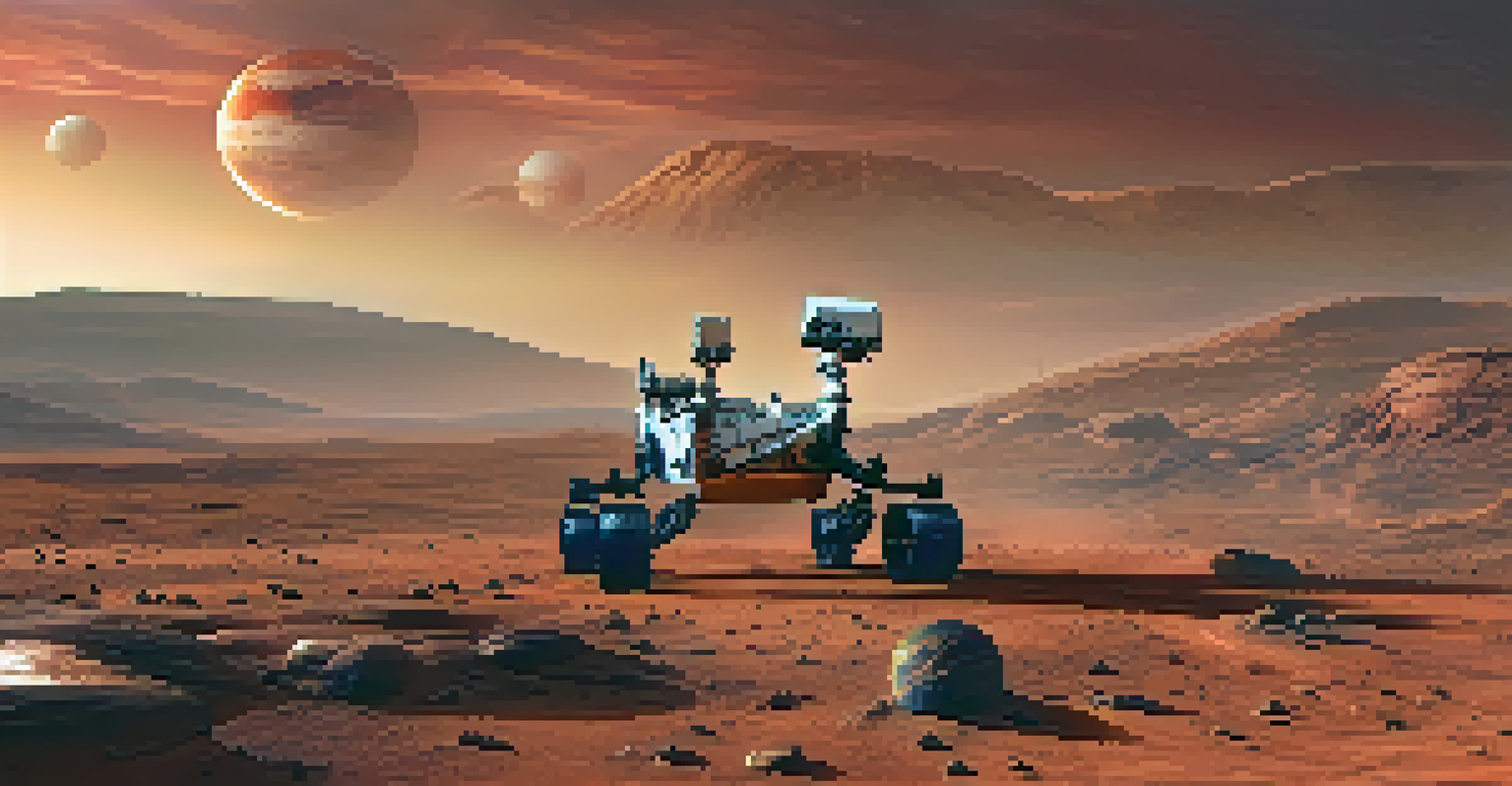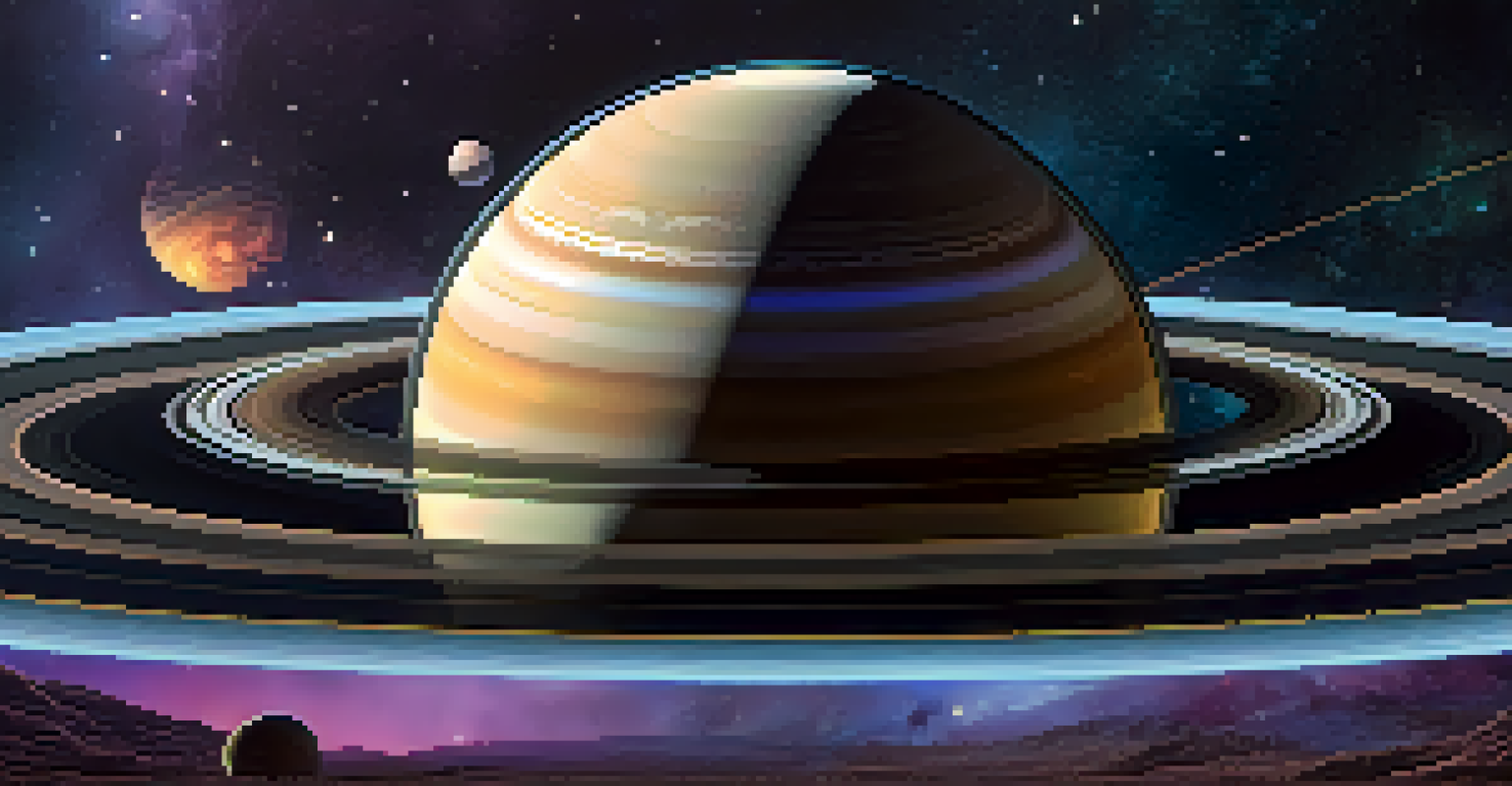The Lunar and Planetary Laboratory's Achievements

Introduction to the Lunar and Planetary Laboratory's Mission
The Lunar and Planetary Laboratory (LPL) at the University of Arizona is a hub for planetary science and exploration. Established in 1960, its mission revolves around advancing our understanding of celestial bodies, including the Moon and planets in our solar system. LPL combines innovative research with educational outreach to inspire future generations of scientists and explorers.
The important thing is not to stop questioning. Curiosity has its own reason for existence.
From lunar landings to Mars exploration, LPL plays a pivotal role in some of the most significant space missions. Its interdisciplinary approach brings together experts in various fields, ensuring a comprehensive understanding of planetary processes. This collaboration fosters an environment where groundbreaking ideas can thrive.
By focusing on both scientific research and public engagement, LPL aims to bridge the gap between academia and the general public. Their work not only enhances our knowledge of the universe but also cultivates a passion for space exploration that resonates with people of all ages.
Key Contributions to Lunar Exploration
LPL's contributions to lunar exploration are nothing short of monumental. One of its earliest achievements was supporting the Apollo missions, which ultimately landed humans on the Moon. The laboratory's scientists provided critical lunar data that guided mission planning and operations, ensuring safety and success.

In addition to the Apollo program, LPL has been involved in numerous lunar research projects. These initiatives have included analyzing lunar samples brought back to Earth and conducting simulations to understand the Moon's geological history. Such research has led to insights about the Moon's formation and evolution.
LPL's Role in Lunar Exploration
The Lunar and Planetary Laboratory has made significant contributions to lunar exploration, notably supporting the Apollo missions and shaping contemporary initiatives like NASA's Artemis program.
Moreover, LPL continues to influence contemporary lunar missions, such as NASA's Artemis program. By leveraging decades of lunar expertise, LPL is at the forefront of shaping future lunar exploration strategies, aiming to establish a sustainable human presence on the Moon.
Innovations in Mars Research and Exploration
Mars has long fascinated scientists, and LPL has made significant strides in this area. The laboratory has been instrumental in various Mars missions, including the Mars Pathfinder and Mars Reconnaissance Orbiter. These missions provided invaluable data that transformed our understanding of the Martian environment.
Somewhere, something incredible is waiting to be known.
One of LPL's noteworthy innovations is the development of advanced imaging techniques. These methods allow researchers to analyze Martian terrain more effectively, revealing details about its geological history and potential for past life. Such insights play a crucial role in selecting landing sites for future missions.
Furthermore, LPL's interdisciplinary teams collaborate on projects like the Mars Sample Return mission. By studying Martian geology and climate, LPL helps pave the way for returning samples to Earth, which could answer fundamental questions about life beyond our planet.
Contributions to Outer Planetary Research
LPL's expertise extends beyond the inner solar system to the outer planets, including Jupiter and Saturn. The laboratory has played a key role in missions like Cassini-Huygens, which explored Saturn's rings and moons. This mission yielded astonishing discoveries about the planet and its complex system.
The research conducted by LPL scientists has provided essential data on the atmospheres, magnetic fields, and potential habitability of these distant worlds. By analyzing the findings from missions, researchers can further understand the dynamics of planetary systems and their formation.
Innovations in Mars Research
LPL has advanced Mars exploration through innovative imaging techniques and collaborative projects, enhancing our understanding of the Martian environment and potential for life.
Moreover, LPL's contributions continue to inform future missions targeting the outer planets. As we look toward ambitious projects like the Europa Clipper, LPL's foundational research will guide the quest for life in the ocean worlds of our solar system.
Educational Outreach and Public Engagement
Beyond research, LPL is committed to inspiring the next generation of scientists through its educational outreach programs. These initiatives aim to engage students and the public in the wonders of planetary science. From workshops to public lectures, LPL fosters a love for space exploration.
LPL also collaborates with schools and community organizations to provide hands-on experiences. By creating interactive learning opportunities, they help demystify complex scientific concepts, making them accessible and enjoyable. This kind of engagement is vital for cultivating future leaders in science and technology.
Through their outreach efforts, LPL not only promotes scientific literacy but also encourages a wider appreciation for the universe. By sharing the excitement of discovery, LPL aims to spark curiosity and passion in people of all ages, ensuring that the spirit of exploration continues.
Cutting-Edge Technology and Research Development
At the heart of LPL's achievements is its commitment to cutting-edge technology. The laboratory continually develops innovative instruments and methodologies that enhance planetary research capabilities. These advancements enable scientists to collect and analyze data with unprecedented precision.
For instance, the use of high-resolution imaging and spectrometry has revolutionized the way researchers study planetary surfaces and atmospheres. Such technologies allow for the detection of minerals, ice, and organic compounds, which are crucial for understanding planetary histories and potential habitability.
Commitment to Education and Outreach
LPL promotes scientific literacy and inspires future scientists through engaging educational outreach programs that make planetary science accessible to all.
LPL's focus on research development ensures that it remains at the forefront of planetary science. By investing in new technologies, LPL not only enhances its own research but also contributes to the broader scientific community, fostering collaborations that drive discovery.
Future Directions and Ongoing Missions
Looking ahead, LPL is poised to continue its legacy of exploration and discovery. With multiple ongoing missions, including the Lunar Gateway and the Mars 2020 Perseverance rover, LPL's expertise is crucial for their success. These missions aim to answer pivotal questions about the solar system's history and the potential for life beyond Earth.
Moreover, LPL is actively involved in preparing for future missions that target asteroids and comets. By studying these ancient bodies, researchers hope to unravel the mysteries of the early solar system and gather insights about the origins of life.

The commitment to innovation and collaboration will ensure that LPL remains a leader in planetary science. As new technologies and missions emerge, LPL is dedicated to pushing the boundaries of what we know about our solar system and beyond.
Conclusion: The Impact of LPL's Achievements
The Lunar and Planetary Laboratory has made remarkable contributions to our understanding of the universe. Through its pioneering research, innovative technologies, and dedication to education, LPL has become a beacon of knowledge in planetary science. Its achievements not only advance scientific inquiry but also inspire future generations to explore the cosmos.
As we reflect on LPL's impact, it is essential to recognize its role in shaping the field of planetary exploration. The laboratory's work continues to influence current and future missions, underscoring the importance of collaboration and interdisciplinary research.
In summary, LPL stands as a testament to the power of curiosity and discovery. With an eye toward the future, the laboratory will undoubtedly continue to unveil the secrets of our solar system, fostering a deeper understanding of our place in the universe.